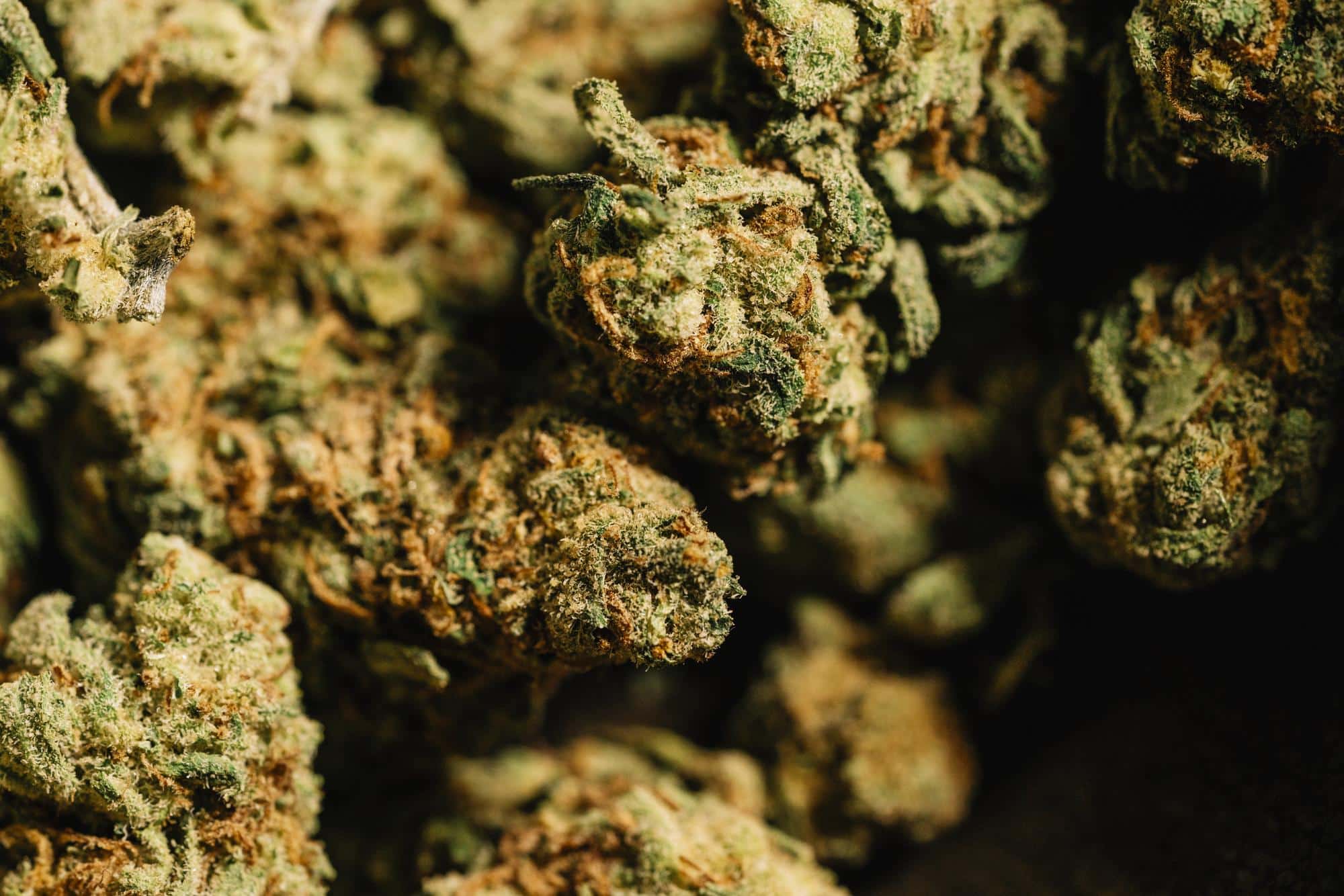Sativa vs Indica – Which one is right for me?
by Haley Mills · January 25, 2023
Curious about the differences between Indica and Sativa? Check out this blog post and discover the key distinctions between these two cannabis plant types.

Curious about the differences between Indica and Sativa? Check out this blog post and discover the key distinctions between these two cannabis plant types.
While most of us have heard the terms “marijuana” and “cannabis,” fewer people are aware of the differences between Indica and Sativa. It’s essential to know about these strains because they show that cannabis can produce certain physical and psychoactive effects depending on the strain you purchase.
Throughout this article, we will explore the details of the cannabis plant and its growth as well as the various types of cannabis. By knowing this information, you can be confident in choosing the right medical cannabis strain for your lifestyle and health needs.
What is a strain?
Cannabis strains are considered to be a pure or hybrid genetic variation of the plant Genus Cannabis. There are three species: Cannabis Sativa strain, Cannabis Indica strain, and Cannabis Ruderalis.
Ruderalis is not as popularly known; however, it is a derivative of cannabis with the lowest THC levels. Although they are popular among the cannabis community, hybrids are not considered a species as they are made of Sativa and Indica, with typically one or the other dominating the gene pool.
Landrace Strains
The word landrace originates from the Danish language and simply means “origin.” Landrace strains are the oldest known strains in the cannabis world. They traveled from the Himalayan mountains all over the world and have become the parent strains to many well-known hybrids we use today.
The majority of today’s best cannabis strains are hybrid, meaning they were selectively produced for desirable genetic qualities such as terpene production, cannabinoid preferences, and THC potency.
What is a Terpene?
Terpenes, also known as terpenoids or isoprenoids, are the largest group of naturally occurring compounds in the cannabis plant. Terpenes are classified as monoterpenes, sesquiterpenes, diterpenes, and triterpenes. These aromatic hydrocarbon molecules give cannabis its unique smell, taste, and color.
Terpenes are found in many plants, flowers, trees, fruits, and even some animals. They can also be extracted from dried flowers and herbs as essential oils.
Terpenes and Potency
Terpenes are organic chemical compounds found in some herbs, most popularly known in connection to the cannabis plant.
Terps can provide desired characteristics like flavor profile, aroma, and color. You can add them to cannabis flowers, tinctures, topicals, and edibles to increase psychoactive effects.
Although terpenoids do not affect cannabinoid potency, they can work with cannabinoids like THC and CBD to enhance health benefits. They have been linked to reducing the symptoms of certain mental and mood disorders, anxiety, and depression.
Two popular terpenes are linalool (found in Lavender) and a-Pinene (found in rosemary), which are known to reduce stress and increase mental clarity.
Cannabinoids vs. Terpenes
Cannabinoids and terpenes are both active chemical compounds found in cannabis plants. While cannabinoids are considered primarily responsible for the euphoric effects and medicinal benefits associated with cannabis Sativa, terpenes remain the source of the cannabis plant’s aroma and taste.
However, when cannabinoids and terpenes combine, they create a synergistic effect on the human endocannabinoid system. The two complement and enhance their therapeutic or euphoric properties.
Cannabis Plants 101
The cannabis plant has two major strains: Cannabis sativa and Cannabis indica. While these two kinds of plants are both members of the cannabis family, they have some differences in their appearance and their chemical composition.
There is another kind of cannabis plant known as Cannabis ruderalis plants, however, this plant is not considered cannabis but rather hemp because it does not produce high amounts of THC. Instead, the hemp plant is high in CBD which is non-psychoactive and does not produce a high.
On the other hand, the indica and sativa plants tend to produce very high amounts of THC which is one of the reasons they are so widely cultivated. It is important to keep in mind that both indica and sativa plants each have hybrids that have their unique properties.
Indica Anatomy
Indica plants are chunky, bushy plants that grow well in dry and difficult environments. The indica plant is native to the countries of Turkey, Afghanistan, and Pakistan. The short nature of these plants helps them to retain water and take root in hard and dry soil.
Of course, now that greenhouses are available, indica plants can grow in much more favorable environments. Because of this, cannabis plants grown inside greenhouses can grow healthier and larger than they ever could when growing out in the wild.
If you look at the leaves of an indica plant, you will see the star-shaped leaves that are typical of all cannabis plants. However, if you look closer, some details distinguish these leaves from the sativa plant. The most notable characteristic of indica leaves is that they are wide and dark green.
Indica plants typically grow quickly and produce more buds. These buds are the most valuable product of the plant because they are what people consume. Indica flowers can appear anywhere between forty and sixty days of the plant’s development.
Sativa Anatomy
Rather than growing in the dry, rocky landscape of Afghanistan and Pakistan, Sativa typically grows best in the warm, sunny environments of Asia, South America, and some portions of Africa.
The sativa plant is tall and thin (up to twelve feet) when compared to the stout indica plant and there is a noticeable difference in the structure of its leaves. The parts of sativa plants, including the leaves, are long and slim and are usually a light green color.
Sativa plants grow quite slowly and take some time before they can produce buds. The first buds usually appear between seventy and one hundred days of the plant’s development.
Sativa plants have similarly high levels of THC, but, in contrast, they produce lower concentrations of CBD. Due to the difference in concentration, Sativa plants produce unique effects in comparison to Indica.
Essential Cannabis Plant Parts
- All cannabis plants start as seeds that sprout with a taproot; a strong, singular root that keeps the plant secure in the ground. A healthy cannabis plant will develop many nodes which are the points at which branches sprout from the plant’s main stem.
- At certain nodes, small leaves known as fan leaves may develop. Cultivators will snip these leaves away because they are not useful in the production of cannabis products. When buds or flowers start to develop on the plant, little sugar leaves will form around the buds. They are rich in resin and work well for making cannabis extracts.
- The buds are the crown jewels of the cannabis plant. They are, in essence, the fruit of the plant and have one of the highest concentrations of THC, terpenes, and CBD than any other part of the plant. It is vital to remember that only female cannabis plants can produce these buds.
- The part of the plant that produces the highest concentration of cannabinoids, that is, THC and CBD, is the bract. The bract is a protective layer of tiny leaves that surrounds the reproductive organs of the female plant. The bract is also extraordinarily rich in resin.
What are Trichomes?
Trichomes cover mature buds and produce a strong resin used in the production of hash. Trichomes are also very high in THC and CBD concentrations and handle the production of cannabinoids for the plant.
However, the original purpose of trichomes is to fend off potential predictors such as insects.
Trichomes are also capable of preventing the cannabis plant from losing water, keeping the plant warm when temperatures drop and luring in potential pollinators.
Qualities of a Good Strain
For marketing and medicinal purposes, cannabis breeders will develop different varieties to highlight specific desirable traits, such as:
- Color
- Density
- Flavor profile
- Aroma
- Medicinal benefits
- Psychoactive effects
- Cannabinoid percentages
- THC vs. CBD
Growing Indica vs. Sativa
The central aspect to understand is that it is typically easier to cultivate an Indica strain than Sativa. Indicas and their hybrids are a favorite among home growers because they offer certain benefits for higher yields both inside and outside. Indica plants do not get too tall, significantly if you are growing indoors. They can usually be placed easily beneath an indoor ceiling and light setup. The shorter, bushy plants may help keep your cultivation low-key and out of public sight if grown outdoors.
Indicas are also typically easier to maintain. They offer a shorter flowering time and organically high yields, so even less experienced growers can get them through a flowering period and produce dense buds. Indica cannabis plants are excellent options for cooler climates and a short outdoor growing season and are the best option for novice growers.
Consuming Indica Weed
When most people think of someone smoking cannabis, they think of someone sunken into the couch surrounded by snacks as they relax and watch a movie. When it comes to popular Indica strains, this image is not too far from reality. Indica strains tend to be known for the ability to produce a strong and relaxing high.
Its effects are thanks to its chemical content. Indica not only has high concentrations of THC but very high concentrations of CBD as well. The two of these cannabinoids together can make for a very relaxing experience when indica is smoked or otherwise consumed.
If you decide to smoke indica rather than consume it in other ways, you will find that its effects are next to instant. This is because when you inhale cannabis, the THC will travel through your lungs and into your bloodstream. Any drug that enters your bloodstream will produce an effect.
On the other hand, if you eat something containing indica, you will need to wait a few hours before you will feel any effects. This is because it will take some time for your stomach to break down the THC product and then absorb the THC into your bloodstream. Also, with this method, smaller amounts of THC will enter your bloodstream once compared to smoking.
There are many uses for indica because of its properties. Because the effects of indica tend to be relaxing, many may find that it is the perfect type of cannabis to help them unwind after a long and stressful day. Others who have trouble sleeping may find that indica can help them drift off.
One thing is certain: indica is not the best choice if you need to keep yourself awake and alert. For that, you’re better off choosing a sativa strain instead.
Consuming Sativa Weed
Sativa is a very different strain compared to Indica. Like Indica, Sativa dominant strains can come in a variety of forms such as smokable buds, edible candy or other snacks, and sometimes even topical products such as lotions. Because of this, using sativa cannabis is more or less the same as using indica.
However, its effects are different from indica because of its high concentrations of THC but lower concentrations of CBD. Because there is not as much CBD in sativa, the effects of sativa strains tend not to be as relaxing or as soporific. This is not necessarily a bad thing.
While more scientific research is required for the effects of sativa, some impressive effects have been noted and described by its users. People who have tried sativa find that they may feel more creative and more energetic. Some may even find that they can focus better when they consume sativa cannabis.
In some people, however, sativa may worsen anxiety. If you suffer from anxiety, it might be best to steer clear of sativa strains to be on the safe side. Instead, you may opt for indica strains or hybrid strains.
Sativa may be able to have some effect on mood, specifically the stabilization of mood. In those who suffer from a lack of appetite or nausea, sativa may be able to assist in alleviating these symptoms. In cancer patients and other people who are chronically ill, both sativa and indica strains may have some applications in the alleviation of pain.
In Conclusion
Learning what Indica and Sativa strains of cannabis will work best for you is a process. What is good for one person may not be great for another. There are so many products and options to choose from it can be overwhelming.
Cannabis interacts differently in everyone, so start with a little bit and increase the amount until you get the effects that feel good. With this knowledge, you can make more confident decisions when it comes to choosing cannabis strains.
Always make sure to read product labels for dosage recommendations. Ingesting, or taking cannabis sublingually will cause a longer, more intense feeling while smoking or vaping will have faster, yet shorter effects. Keep this in mind as you learn more about how your body responds to different products and strains of cannabis.
Last Updated: August 8, 2024
Get Approved for Your Medical Marijuana Card in Minutes!

Get Your Medical Card
Connect with a licensed physician online in minutes

Like This Article?
Share with your friends
Table of Contents
Keep Reading
-
7 Latest News on GA Medical Marijuana for Chronic Pain Patients
Stay updated on the latest news GA medical marijuanas for chronic pain patients and more.
-
Understanding the Best Edible for Sleep: Types and Effects
Discover the best edible for sleep and learn about its types and effects on sleep quality.
-
Enhancing Meditation With Cannabis: A Comprehensive Guide
Elevate your meditation practice with cannabis using this comprehensive guide! Uncover the benefits and techniques for a transformative experience that will enhance your mindfulness. Click here to unlock the secrets of cannabis for meditation today!



